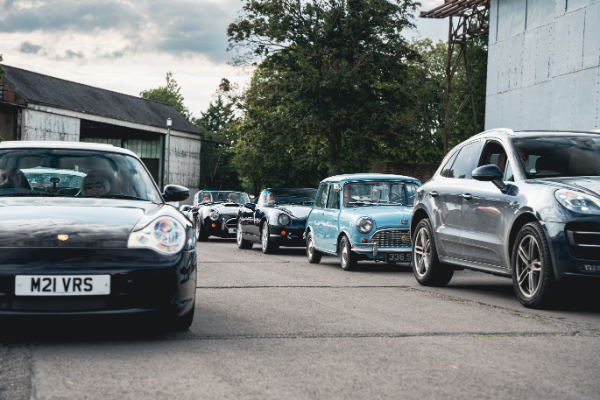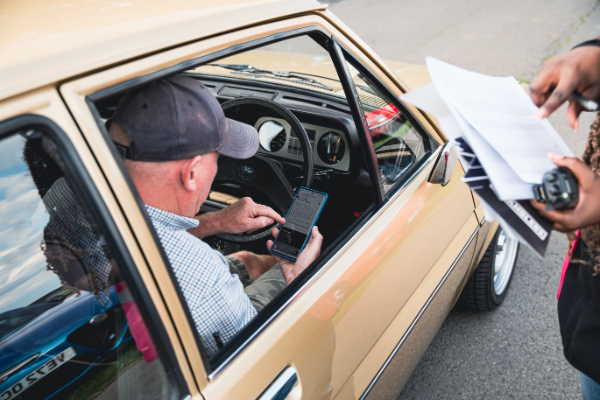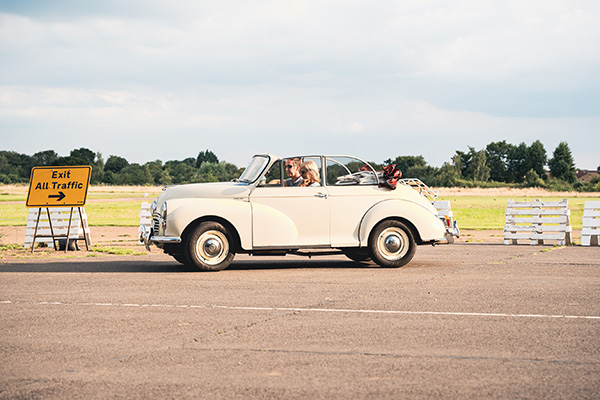How owning a classic car can save you money
For many, a classic car represents passion, nostalgia, and a slice of motoring history. But here’s something that often surprises new owners: a classic can also be easier on your wallet than you might think. While not every model will be cheap to run, there are multiple ways in which a classic can save money compared to modern cars - from tax and MOT exemptions to insurance, servicing, and depreciation.
Here’s how owning a classic could make financial sense.
ULEZ and Low Emission Zones
Many modern diesels and older petrol cars fall foul of Ultra Low Emission Zone (ULEZ) rules, with London drivers paying £12.50 per day. But classics registered as Historic Vehicles (40 years old or more) are exempt.
That means taking your 1979 MGB GT into central London every weekend would cost nothing, while driving a 2009 diesel BMW 3 Series in the same zone would set you back £1,300 a year if used just twice a week.
No road tax for historic vehicles
Cars over 40 years old are eligible for free road tax. For context, the average UK driver pays £180–£600 annually.
Run a 1967 Ford Mustang or 1972 Triumph Stag, and your tax is £0. By comparison, a 2023 Ford Focus ST driver pays £240 a year.

MOT exemptions
Historic cars also escape mandatory MOT testing once they hit 40 years. While most owners keep their vehicles roadworthy, the exemption means no annual garage fee.
At an average of £55 per MOT, a 1959 Austin Healey Frogeye Sprite owner saves at least £275 every five years.
Classic car insurance
Classic car insurance is often much cheaper than modern policies because insurers know enthusiasts drive fewer miles, maintain their cars carefully, and store them securely.
A modern VW Golf GTI might cost a 45-year-old driver £600–£800 per year to insure. By contrast, a 1983 Golf GTI Mk1 could be insured on a specialist policy from around £250–£300 - a huge saving.
Footman James specialises in classic car insurance offering tailored cover that reflects the unique needs of enthusiasts. We often find that, from multi-vehicle policies to agreed-value cover, the affordability of the premiums often surprises new customers.
Slower or zero depreciation
Modern cars depreciate fast - often 20–30% in the first year. Classics, meanwhile, can hold steady or even increase in value.
Take the Mazda MX-5 Mk1: tidy examples could be found for £1,500 ten years ago. Today, good cars fetch £5,000–£8,000. That’s the opposite of depreciation - your fun weekend toy might actually earn you money over time.
Bargain classics still exist
Not every classic is a six-figure Ferrari. Plenty remain affordable and practical.
- Classic Minis can be bought from around £6,000 and remain cheap to run.
- Volvo 240 estates from the 1980s and 1990s are still under £4,000 and built to last.
- Even 1990s hot hatches like the Peugeot 306 GTi-6 or Ford Puma are rising in interest but remain attainable bargains.

Lower running costs
Many classics aren’t as thirsty as people assume. A Morris Minor 1000 will do 35mpg - not bad compared to some modern SUVs.
Because classics are rarely used as daily drivers, fuel bills remain modest. Doing 2,000 summer miles a year in a 1960s MG Midget will cost far less in petrol than commuting 12,000 miles a year in a modern family hatchback.
DIY maintenance and home servicing
Modern cars require diagnostic laptops and main-dealer visits. Classics? They were designed for spanners and socket sets.
A home mechanic can replace the clutch on an MGB for under £200 in parts. The same job on a modern VW Passat could cost £1,200 at a dealer.
Not only does this save money, but it also adds to the enjoyment - tinkering is part of the classic ownership experience.
Affordable parts and specialist servicing
Thanks to thriving enthusiast clubs and specialist suppliers, parts for many classics are cheap and plentiful.
- A replacement radiator for a Triumph Herald: around £120.
- A radiator for a modern BMW 3 Series: often over £400.
Servicing is also cheaper at independent classic specialists, whose labour rates can be £40–£60 per hour compared to £120+ at a main dealer.

You probably use it less
Most classics are occasional-use cars - weekend drives, car shows, and special occasions. That lower mileage spreads costs across fewer miles.
Drive your 1970s Porsche 911 only 2,000 miles a year, and even at 20mpg the fuel bill is under £800 annually. Run a modern SUV daily at 35mpg for 12,000 miles and you’re spending over £2,000 a year at today’s pump prices,
Owning a classic car is about passion, nostalgia, and enjoyment - but it can also make good financial sense. Between ULEZ exemptions, free tax, cheaper insurance, low depreciation, DIY maintenance, and affordable parts, classic ownership can be lighter on the wallet than running a modern car.
Of course, there are costs involved, and some rare classics can be expensive to restore. But for many enthusiasts, the sums add up surprisingly well. Ultimately, a classic isn’t just a car, it’s an experience, a slice of history and a surprisingly cost-effective way to enjoy motoring.

COMMENT